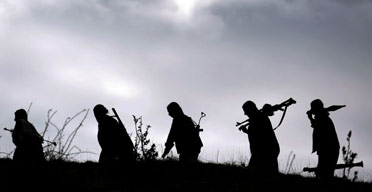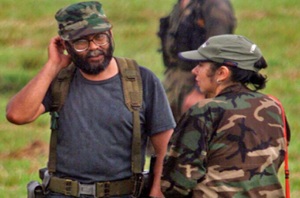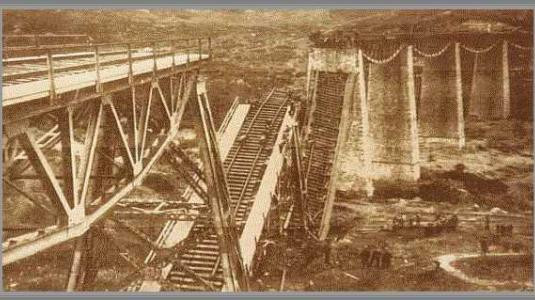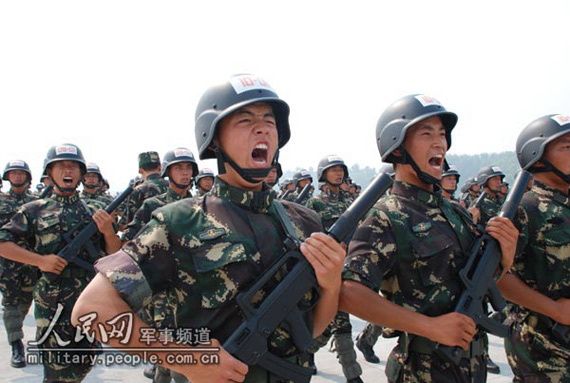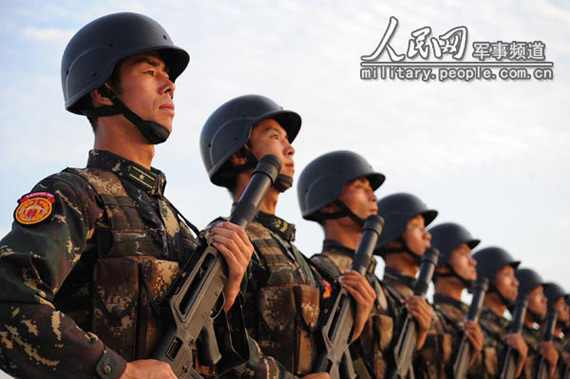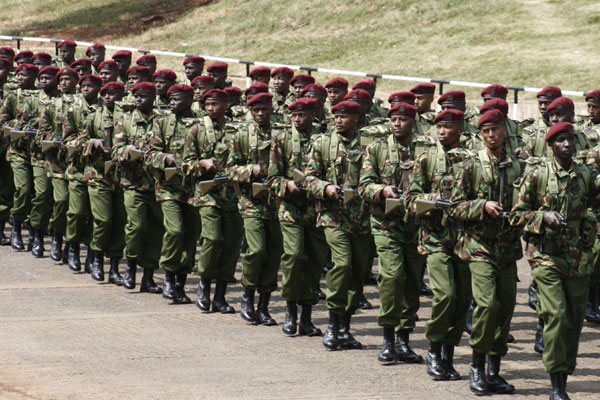Little is known about them and their work. Within the Kenyan Defense Forces (Kenya Army, Kenya Air Force and Kenya Navy) establishment, their real work is not even spoken in whispers. Today we can reveal that it is the official government policy not to publicly acknowledge their work.
Their official name is Kenya Army Paratroopers. You will only see them during the national pass out parades. Within the army they are just known as the ‘green berets’ or the ‘paras’ thanks to their unique paratrooper wings insignia.
Ulinzi House (Kenya’s Department of Defense –DOD- headquarters) is shy to admit that the Kenya Army Paratroop Battalion is her premier and elite Special Forces unit. All of the records denoting their work and missions are classified.
The closest the public came to know their significance was during the abortive 1982 Coup plot against Kenya’s second president Daniel Moi’s administration by the Non-commissioned Officers of the Kenya Air Force (KAF). The Paras commandos and the Presidential Escort regiment of GSU’s Recce Company were the ones who escorted Moi back to Nairobi from the Rift Valley. The second time was during independent Kenya’s second transition. President Kibaki’s first Aide de Camp was an officer from the Paras.
Seeking for information on them is an uphill task. Former and current commandos who have served in the Paras battalion are extremely friendly and courteous but they reveal nothing about their work.
The much that DOD reveals is the vision, mission and role of this battalion. Nothing else. And these for a keen military watcher are quite telling.
Their mission is “to execute airborne operations in order to counter both external and internal threats.” This is closely followed by their vision which is to “have an airborne unit deeply rooted in professionalism and certain of its ability to fight, win land battles and execute airborne operations.”
However their real work comes out in their role which is summed up in one sentence “to conduct airborne operations and special operations in both conventional and unconventional warfare.” The key words here are their capability to conduct ‘conventional and unconventional warfare’.
Though for many years the Kenyan military have been ridiculed as too soft and combat shy rotting in the barracks at the expense of tax payers money, the veracity of these claims cannot be verified. Much of the information the Kenyan intelligence community has on the country’s possible threats and opportunities is obtained by the paras.
Interestingly while the entire battalion is a special operations and warfare brigade there exists within its ranks a mega secretive division referred to as “D Company 20 Paratrooper Commandos”. These are the cream of the army and its dare devil entity. In most of the world’s directories on Special Forces across the world, their listing appears in only a few. Actually the General Service Unit (GSU) of the Kenya Police is much more known that the ‘D’ Company. And this explains how secretive the Paras are. Apparently they thrive best in their covert nature.
The ‘D’ Company of the 20th Paratrooper Commandos are a complete replica of celebrated British crack unit the Special Air Service (SAS). Actually their training manuals are almost similar. The Kenyan paras are fashioned in the same lines as their British counterparts. Both simulated and actual training for the paras is conducted in Kenya and in UK, Israel and USA. The Kenyan paras train alongside their comrades in arms of the British Army’s SAS, Sayaret Matkal of the Israeli Defense Force (IDF) and US Rangers. A critical component of their training is ‘thinking like terrorists and would be assassins’. It is an involving process and life changing experience before one becomes a Para. Among their key strengths and competencies is fluency in multilingualism, counter and anti terrorism activities, urban, desert, mountain and bush combat. They can also operate heavy artillery and light infantry weaponry.
These are not all; the Paras are masters of disguise, deceit, sabotage and are well versed in special weapons, martial arts, pugilism and hand to hand battle. The Paras are also excellent intelligence operatives and form the cream of the largely unknown Military Intelligence Corps (MIC) and provide the bulk of staff manning the cadres at the surreptitious Kenya National Counter Terrorism Centre (NCTC) and sometimes share critical HUMINT (human intelligence) and ELINT (Electronic intelligence) dossiers with the country’s supreme intelligence agency the National Security Intelligence Service (NSIS). The most interesting bit about the Paras is that they are avid readers and keep track on the latest societal trends. Before embarking on any mission, the ‘green berets’ are briefed on all possible scenarios to expect and equipped for the same.
To adorn the ‘green beret’ paratrooper commando insignia is no easy task. Only the exceedingly intelligent make it. To be admitted to the paras is a tedious process with a higher security clearance and thorough vetting process undertaken to eliminate all possible doubts and compromise possibilities. Extreme physical and mental tests are carried out on would be candidates before they are admitted to the Paras. These are followed up by highly involving IQ tests.
Once one has been admitted to the Paras, the hardest and harshest training system ever subjected to a human being begins. It’s almost like torture and the drill sergeants know no other way other than the contents prescribed in training manuals. Personnel admitted in the Paras specialize in mountain warfare operations at high altitudes terrains and exposed to the tough skills of climbing and cold weather survival.
Other than mountain warfare they are also drilled in vehicle insertion techniques, motor vehicle maintenance and mechanics.
But the real nitty gritty of the paras is airborne warfare. Their training involves the ever risky airborne insertion from both fixed wing aircraft and choppers. To this end the paras not only rely on the army’s airborne unit the 50th Air Cavalry Battalion but also the Kenya Air Force.
Indeed high and low altitude parachute infiltration is the main credo of the ‘green berets’. The three main forms of parachute deep cover infiltration are must training for all personnel in the battalion. These are static line parachuting, high altitude low opening (HALO) and high altitude high opening (HAHO). Both HALO and HAHO drops and insertions are enormously dangerous and always run the risk of enemy detection and contact with ‘objective’.
All Paras are bound by the Official Secrets Act, small wonder they reveal nothing about themselves and confirm nothing even when confronted by facts. But while DOD may refute many of the facts of the paras Wikipedia the world’s online encyclopedia notes about them: “D Company of the 20 Parachute Company is the only sub unit in Kenya that performs high risk tasks such as Recce, ambushes, raids, and high risk infiltration on any task. Within the Company is a troop of 4+20 persons who perform the most dangerous duties of all.”
This is the much that the online chronicle reveals of this battalion which is headquartered in the Kenyan military town of Gilgil with outposts in several other military bases across the republic.
They are inconspicuous from others in the army. Their berets are green in colour. Unsentimental and hard-boiled commandos, well versed in all forms of warfare.
INSIDE THE GSU
Little is known about them.
The much that the general public knows about them is that they are the painful answer to civil disturbance and the quelling of riots by university students, unruly political mobs and communal skirmishes.
Tonnes of flak have been pummeled at them by human rights activists’ accusing them of gross human rights abuses. That notwithstanding they have also been blamed of high-handedness and excessive use of force when dealing with the general public. But perhaps their darkest hour came in 1975, when populist politician, JM Kariuki was assassinated. Media reports and witness accounts reveal that the then GSU Commandant Ben Gethi was the last person to be seen with JM alive.
This has been the public perception of the General Service Unit (GSU). Whom the press always refers to as “dreaded”. They are truly ‘terror’. The mere mention of the word GSU among many Kenyans normally sends shivers of fear and trepidation.
Just why are they feared? Is it because of their no-nonsense approach to civil disorder? Or their dispassionate adherence to their commands? This could be, but the reality is that the Kenyan and by extension the Eastern African public has never really known, let alone appreciates what the GSU is all about. A major reason why this is so is because, the Kenya government rarely comments on her activities and operations.
And today the secrets are out.
GSU is a specialized unit of the Kenya Police Service that is eternally on standby. Within the Kenya’s security establishment GSU’s real significance is a tightly kept secret. While few in Kenya know of the other side of the GSU, the certainty is that this unique outfit of the Kenya Police is actually acclaimed worldwide and listed in numerous almanacs of “Special Forces” among them the “Global Special Operations Forces Directory.” But even then very little is written or officially acknowledged about this division and her numerous exploits are virtually unknown to Kenyans.
Interestingly the GSU has been a subject that has attracted the interest of quite an array of scholars for some time now. Way back in 1992, the GSU was a theme that had intrigued security scholars in the continent. In his paper Civil-Military Relations in Post Independent Africa published in the South African Defense Review of 1992, Dr Simon Baynham fervently argued that “Kenya’s paramilitary General Service Unit (GSU),” was “built up by President Moi to break the monopoly of the regular armed services.”
This assertion came soon after Africa’s foremost scholar on military affairs Dr Samuel Decalo had contended that the GSU was “capable of defeating the entire army by itself.”
These two viewpoints by imminent scholars are indeed the pointer to what the GSU is all about. While the GSU has performed numerous proxy activities, and classified and unclassified operations both in Kenya and within the East, Central and Horn of Africa regions, it only acknowledges three of them. These are, the 1961 Zanzibar Uprising, where GSU were “for the first time deployed outside Kenya… to Zanzibar to quell civil disturbances that had claimed about 90 lives.” It took the GSU “only two days to restore normalcy.” The second operation that GSU admits is the 1963 – 1969 Secessionist Shifta War, which degenerated into a guerrilla war within Kenya’s Northern Frontier Districts. To this day the legend of the GSU is known across the NFD up to Mogadishu. The final one is the gallant role played by this regiment during the abortive 1982 Coup attempt orchestrated by renegade Kenya Air Force personnel and several activists. Though little light has been shed on the GSU and the 1982 Coup attempt, Professor Herb Howe in his paper “African Private Security” published in Conflict Trends gives a glimpse:
“Insecure rulers have parallel forces for several purposes. Firstly, they protect the ruler against domestic unrest, especially coup attempts: for example, Kenya’s GSU stopped the attempted takeover by the air force in 1982. Their well-armed presence supposedly lessens actual coup attempts.”
Investigations of GSU’s operations now reveal that unbeknown to the general public is the fact that GSU is not just a formation like any other within the Kenya Police Service. The GSU is a specific unit of commandos in the same leagues as the famed British Special Air Services (SAS), US’ Delta Force, France’s EPIGN and celebrated ultra secret Israeli commandos, the Sayeret Matkal, who rescued more than 100 Air France passengers in “Operation Thunderbolt” at Entebbe, Uganda. Put it simply, the ultimate war machines.
Though lately, the GSU has started recruiting women into its ranks, it has always been a male dominated squad, owing to the rigours undergone during training and work related demands. Of all her 13 commanders since inception none has been a woman and two of their chief commandos have risen to become Police Commissioners. The late Ben Gethi and the current chief Mathew Iteere.
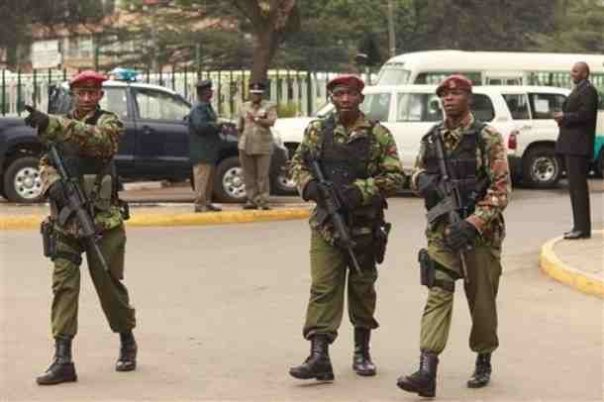
It is instructive to note that immediately Major General Hussein Ali took over as Commissioner of Police, he deployed officers drawn from the GSU as Officer Commanding Police Division (OCPDs) and even into the crack criminal bursting squad of the Criminal Investigations Department (CID) the “Flying Squad” across the republic, to stem the rising tide of crime that was slowly creeping into the country. The success rate is plain for all to see today small wonder Kenya was recently upgraded by the UN and granted “B” status in the same leagues as Vienna, Geneva and Rome. Whenever crime levels soar, the police always falls back on the GSU to contain emerging criminal trends.
According to the Kenya Police Service the general objectives of the GSU are “to deal with matters pertaining to internal security across the republic; to be a reserve force to deal with special operations and civil disorder and to be an operational force that is not intended for use of a permanent static nature.”
GSU’s beginnings date back in time. The creation of the GSU was mooted during Kenya’s independence struggle. Faced with heavy casualties within the British Army ranks, the colonial government sought to minimize her losses significantly and at the same time come up with a fighting unit that would achieve results. This is how the GSU was conceived, borne and specially nurtured and trained in 1948. At that time it was referred to as the Regular Police Reserve or the Emergency Company. Its scope of operations at that time involved curtailing the rapid expansion of Elijah Masinde’s Dini Ya Musambwa in Pokot counties in the expansive Rift Valley Province. However its main challenge was to deal with the highly advanced bush and non-conventional guerrilla war tactics of the Mau Mau freedom fighters.
Come 1953 and the “Emergency Company” became the GSU, a name retained to this day. This is a highly armed; hard-nosed trained and well equipped fighting force. Another surreptitious aspect of the GSU is that it is an all rounder fighting force, capable of waging war on all fronts, namely air, land and water. However GSU’s specialty is as it was originally intended; non conventional war in extreme conditions. GSU is a fighting unit well drilled in infiltration, subterfuge, intelligence, operating behind enemy lines, martial arts, air borne surveillance, amphibious engagement and anti terrorism.
In 1957, as the Mau Mau war was approaching its zenith, the GSU became a fully fledged formation, within the police establishment. Its first commandant who is credited with making it what it is today was Superintendent of Police (SP) S.G Thompson. By 1963, Africanisation of the top portfolios began and by 1967 all company and platoon commanders were black Kenyans.
Training of GSU recruits is a strenuous and back breaking regime of some 10 months at the GSU Training School (Embakassi), and the hardy GSU Field Training School, Magadi in the Rift Valley. Very few make it through the arduous training process. Only the toughest, bravest and the best survive. Actually, the GSU is not only structured in the same lines as the British famed Special Air Services (SAS) and the Special Boat Services (SBS), it is an exact replica of the two. The other notable exception is that the GSU and especially, the elite Ruiru based “Recce Company” is a combination of both with hybrid training from Tel Aviv, London and Washington. The Recce Company from where Presidential Guards are drawn, are not only trained in Kenya, but they also undergo extensive overseas training, at UK’s SAS and SBS facilities and further get drills with Israeli’s covert Sayeret Matkal. With units spread across the republic, GSU forces are self-contained, operate in the field and are provided with their personal equipment, transportation vehicles, and top-of the range communication systems. GSU commandos are experts in all manner of weapons, demolition, sabotage, evacuation, sniping, reconnaissance, surveillance, VIP Protection, bomb disposal, Counter terrorism, night combat, desert warfare, urban warfare, infiltration, mountain warfare, amphibious engagements and survival techniques in enemy territory.
Small wonder you see them at key security installations, like State Houses, Embassies and High Commissions and guarding ‘high value assets’ like visiting dignitaries (President Barak Obama when he visited Kenya as a senator, Hillary Clinton and presidents) and the De La Rue premises.
But perhaps the best kept secret of the GSU is that it only recruits the best. Brilliant intelligence operatives, marksmen, Information Technology wizards and highly motivated individuals are the stuff that straddles the various companies within the GSU fraternity. In some instances, the GSU sometimes loans her operatives to the intelligence services, for delicate and furtive clandestine operations. According to the South African based Security watch think tank the Institute of Security Studies (ISS):
“The GSU acts as the uniformed paramilitary cousin of the security and intelligence units. The GSU handles violent crime, outbreaks of communal violence, and demonstrations. Since 2003, the GSU also has had certain counterterrorism functions, including patrolling around Kenya’s international airports. The General Service Unit (GSU) is a mobile police force that is separately organized from the rest of the Kenya Police. It is a paramilitary police force used for the apprehension of dangerous, syndicated, or armed criminals. The GSU force is equipped with radio communication devices, radar, and computers.”
While the Country Studies Program of the US Library of Congress contends that the GSU is made up of “5,000 strong soldiers” and is equipped with “12 boats, an air wing of seven light, fixed-wing aircraft and three helicopters, and eight armored cars” the reality is that the strength of the GSU and her subsequent fire power, training methods and arsenal are tightly kept secrets only known to a few within the police establishment.
Surprisingly, unlike many other “Special Forces”, in the world which have chest-thumping mottos, the GSU’s one is the best known and humble Kenya Police motto, “Utumishi Kwa Wote” (Service to all). Sadly the nature of their work forbids much to be known about them, yet their zeal and specific operations over the years are tales of heroic exploits in harsh terrains.
In the current Kenyan military incursion into Somalia against Al Shabaab (said to have links with Al Qaeda) the paras and GSU commandos are in the frontlines, with Lieutenant Colonel John Maison Nkoimo (an army paratrooper) as commander of the Southern sector.

